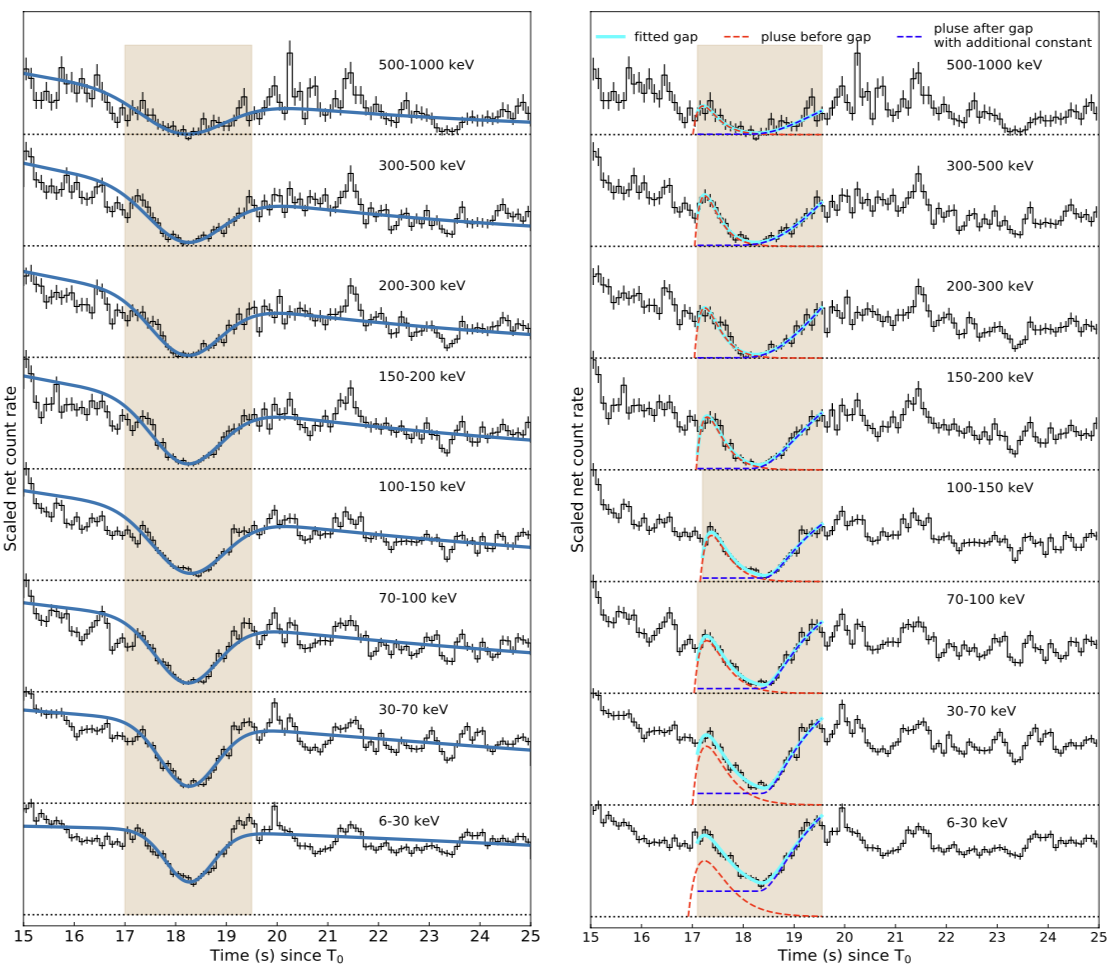Mini-jet emission from a magnetically-dominated gamma-ray burst jet - Notes on Yi et al. 2023
Link to paper: ” Evidence of mini-jet emission in a large emission zone from a magnetically-dominated gamma-ray burst jet”
Short pulses in a gamma-ray burst
The prompt emission of gamma-ray bursts and their origin are not fully understood. For example, it is not clear what the jet is made of, where the emission region is, and what the mechanism is that produces the gamma rays. For non-thermal bursts, there are two main ideas to explain the observations:
- The internal shock model, which involves the collisions of matter-dominated shells.
- Internal collision induced magnetic reconnection and turbulence - also known as ICMART - which is a model involving the collisions of magnetically dominated shells.
A great test case to study this further is GRB230307A, the second brightest gamma-ray burst ever observed. The event lasted for about 41 seconds - putting it in the category of long duration bursts. However, it is associated with a kilonova, suggesting that it originated from a compact binary merger.
Its light curve can be described by an energy-dependent fast-rise-exponential-decay model, also known as FRED. When the light curve is fitted with such a model, the residuals show rapid variations that are thought to be varying short pulses. The variability appears similar in the different energy bands and is temporally aligned. There is also a strong dip. The authors say that this dip is unlikely to be due to absorption because they calculate the optical depth and then say that the energy dependence of the optical depth does not fit any known absorption mechanism. They therefore conclude that a better explanation is that the broad pulse of the light curve is composed of many fast pulses, and the dips are gaps between successive short pulses. This is also the basis for their conclusion that the internal shock model is disfavoured. The ICMART model fits better. In this model, the slow component is related to the activity of the central engine, and therefore to the typical thicknesses of the magnetic blobs. The components that vary on shorter timescales are then related to the emission timescale of local mini-jets within the global emission zone.
But do the short pulses really exist?
What I did not really agree with is their analysis of the “absorption-like” feature, and based on their fit, they claim that it is more likely to be from two short pulses rather than a negative Gaussian. However, I could not find a chi-square value for this fit or any more quantitative assessment between the two. As it is, I just don’t find it very convincing. I may have missed it though.
